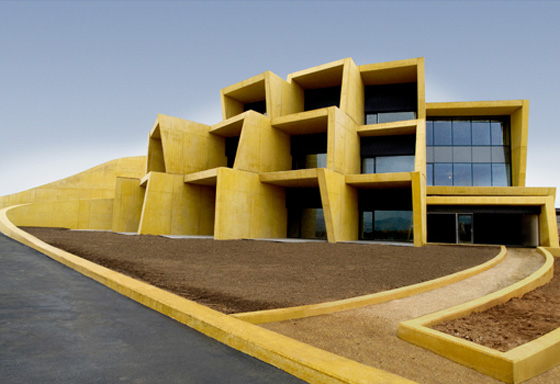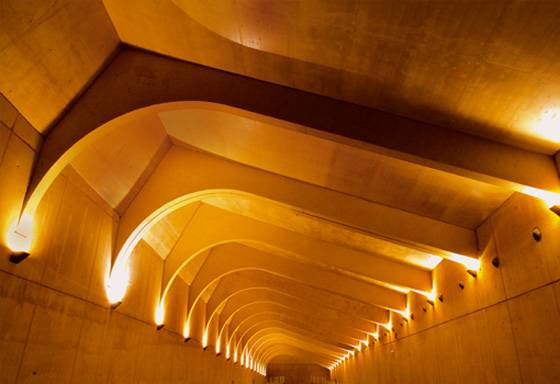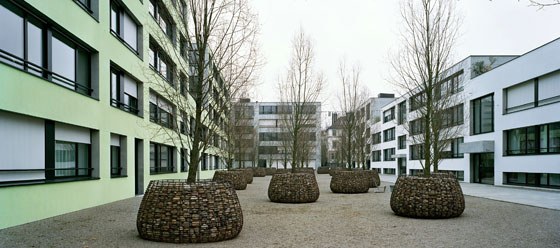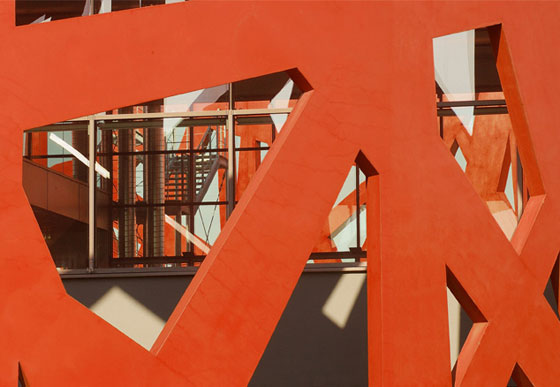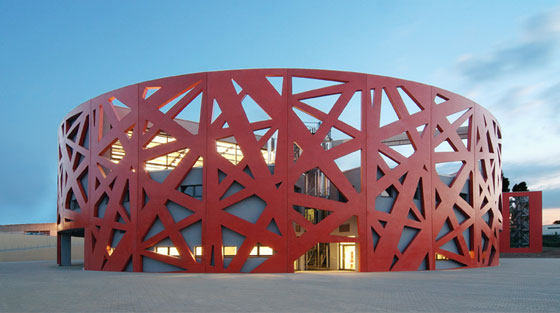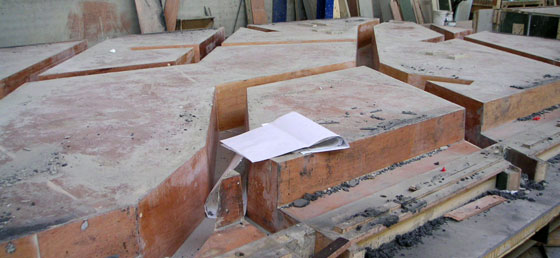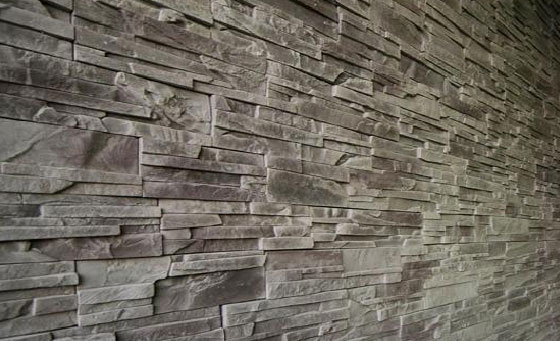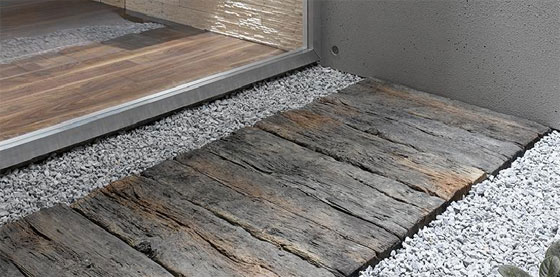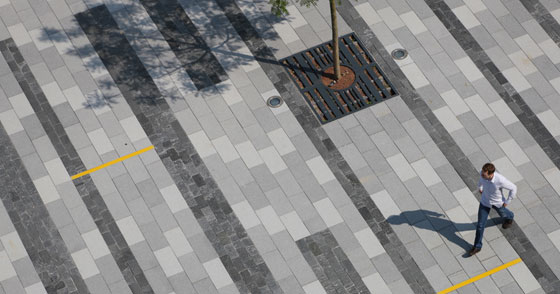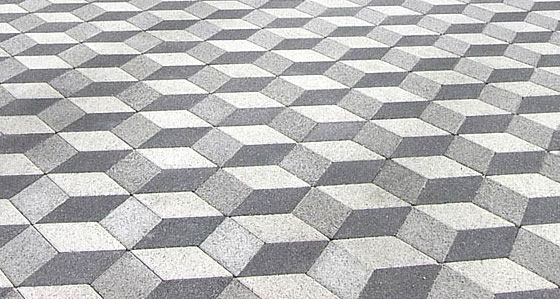Concrete in Architecture (2): not really grey
Text by Susanne Fritz
Switzerland
10.10.10
In the second part of our 'Concrete in Architecture' series, Architonic shows how concrete certainly doesn't have to be grey. From delicate tones to high luminosity, it can take on a wide range of chromatic and emotional complexions. In the following article, Architonic presents a number of techniques that lend concrete colour.
Bodega Antión, La Rioja, Spain: exposed concrete coloured with Bayferrox® pigments
Bodega Antión, La Rioja, Spain: the interior also features yellow-coloured concrete
A very subtle way of colouring concrete is by mixing different aggregates into it. The colour of the cement stays the same, but it's nonetheless possible to partially or fully expose the added aggregate by removing the top layer of mortar. One method of doing this is to 'wash out' the concrete, either chemically or with a high-pressure water jet. Another is sandblasting the concrete surface.
Just how visible the aggregate becomes depends on its colour, the size of the stones and also the contrast between it and the cement to which it has been added. If the cement is grey, then the aggregates stands out less than if it were mixed with a white cement. Conversely, if the cement is given a dark colour by the addition of pigments, a lighter aggregate works better.
ColorCoats by Fabrino: glass granulate that, thanks to its plastic coating, prevent a reaction with the concrete
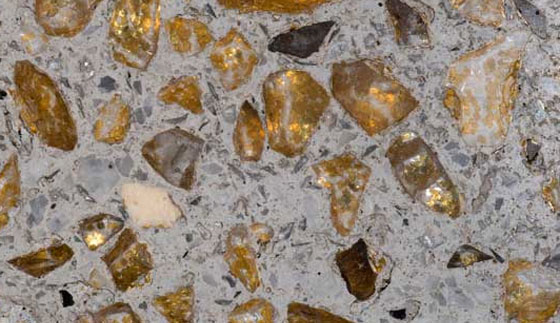
ColorCoats by Fabrino: glass granulate that, thanks to its plastic coating, prevent a reaction with the concrete
×Apart from various natural stones or basalt and lava, recycled materials such as glass, broken brick or slag can be used as aggregate. With light aggregates like clay or pumice, or heavy ones like scrap metal, the weight of the concrete is, of course, affected. Adding glass can have a very aesthetic effect. The problem with this, up until now however, lay in the reaction of the glass's alkali silicic acid with the concrete's alkali hydroxide: this produces an alkali silicate gel, which attacks the concrete and damages the structure.
Color Coats, a product developed by Fabrino in collaboration with the firm Verano, consists of glass granules that, thanks to their plastic coating, prevent such a reaction. Color Coats is available in a wide range of colours and sizes, as well as phosphoric glass, which makes for fascinating light effects in the dark.
'Pflegi-Areal' housing project, designed by the Swiss architects Annette Gigon und Mike Guyer
A further means of adding colour to concrete is through glazing. A glaze can bring to the fore the structure and natural colour of exposed concrete. Coloured glazing can also lend concrete a transparent hue, without concealing its structure: depending on the level of dilution, colours become more or less full and intense.
A glaze is a surface layer of colour, which doesn't penetrate deeply into the concrete and over time has to be renewed, even though it does protect concrete from the elements and from moisture. The façades of the housing project 'Pflegi-Areal', designed by the Swiss architects Annette Gigon und Mike Guyer and recognised with a good-building award by the City of Zurich, are glazed with a product called Concretal by the company Keim.
To colour the concrete right through, you need to add a pigment, like, for example Lanxess's product Bayferrox®. Holcim and Sika also offer iron-oxide pigments. Iron-oxide pigments make a colour spectrum of violet, red, orange, yellow, through to brown and black possible. Green tones can be achieved through considerably more expensive chromoxide pigments. To get a consistent pigmentation, the best thing to do is to have the concrete factory-produced, where laboratory conditions, so to speak, are in place: here, the concrete is properly mixed, which guarantees a good consistency and colouring.
Cologne Fire Service's management and training centre by BFM Architects
Sika recently introduced a revolutionary product to the market. Sika® Color FF is a watery preparation that guarantees a lump-free distribution of the pigment and offers numerous other advantages: because the pigment comes in an open form, it has a high colouring capability; the liquid pigments can be measured and added precisely, or, on larger projects, can be mixed in using a dosing system. Moreover, it can be added to finished concrete or directly into the truck mixer. What makes the pigments particularly interesting in design terms, however, are their wide colour palette: Sika® Color FF also comes in green and blue tones, which cannot be achieved with iron-oxide pigments.
Cologne Fire Service's management and training centre by BFM Architects
Red. It's a colour that makes most of us think of the fire brigade. Therefore, this bright tone was the obvious choice for the façade of the Cologne Fire Service's management and training centre. Pigmented exposed concrete was employed here for the façade grid of the round structure, with its 32 prefabricated concrete elements.
The Dutch architects Wiel Arets have also created a striking structure, made of light-coloured prefab concrete elements
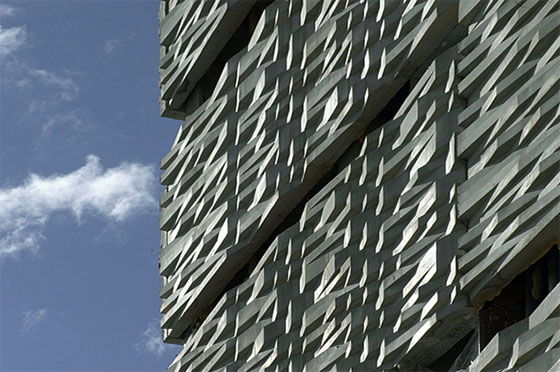
The Dutch architects Wiel Arets have also created a striking structure, made of light-coloured prefab concrete elements
×The Dutch architects Wiel Arets have also created a striking structure, made of light-coloured prefab concrete elements. Here, the intense Spanish sunlight creates particularly strong dark-light contrasts, as shadows are created by the relief. René van Zuk, another Dutch architectural practice, deploy prefabricated concrete elements in front of a background of black-coloured exposed concrete in its 'Zilverparkkade' project. The branch-like structure creates a scheme, or rather an endless pattern, that spans the entire building.
René van Zuuk, Zilverparkkade project: the branch-like concrete elements that sit in front of the glazing and black-pigmented concrete panels
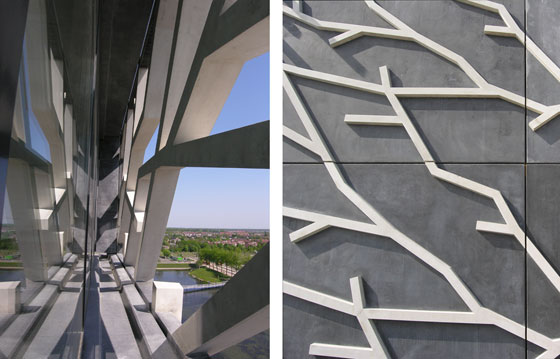
René van Zuuk, Zilverparkkade project: the branch-like concrete elements that sit in front of the glazing and black-pigmented concrete panels
×Shuttering of the concrete elements for the Zilverparkkade project
René van Zuuk, Zilverparkkade project: the branch-like concrete elements in front of the office building's glass façade
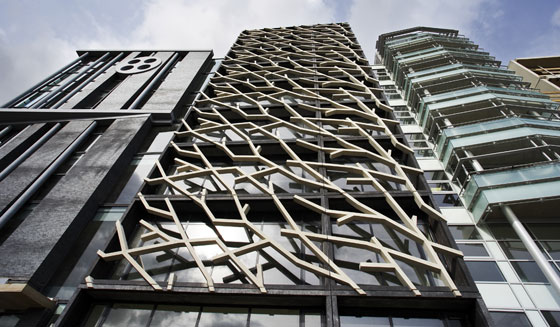
René van Zuuk, Zilverparkkade project: the branch-like concrete elements in front of the office building's glass façade
×Ready-made concrete elements are suitable, however, not only for outer façades: exciting surfaces can also be created indoors using concrete. The company REC, for example, fitted the Corbusierhaus in Berlin out with BetonLith® concrete-slate floor panels – naturally in Corbu's Modulor proportion system. This surface doesn't remind you so much of concrete, but rather, as the name suggests, the optical quality of slate, and is a lot more resistant in a contract setting.
But it's not only 'slate' that can be manufactured using concrete; the look of sandstone and terracotta is also possible, like, for example, with Rieder fibreC elements. Klimex has specialised in concrete products with wood and natural-stone structures, which in no way look like kitsch imitations.
For landscape design and in a town-planning context, Kronimus's ' Öko-City-Truck' concrete panels are very suitable: the large-format concrete panels can be driven on and allow water to seep through, which is important when dealing with large, sealed surfaces.
'Öko-City-Truck' concrete panels, produced by Kronimus
Allowing seepage and therefore more environmentally friendly: und daher umweltfreundlich: Kronimus's 'Öko-City-Truck' conrete panels
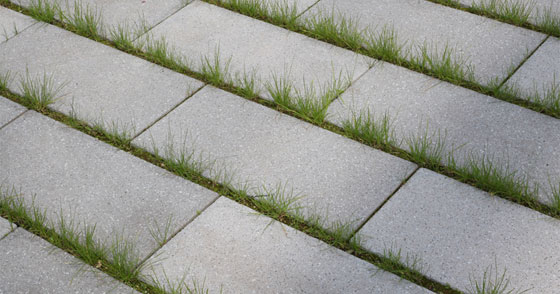
Allowing seepage and therefore more environmentally friendly: und daher umweltfreundlich: Kronimus's 'Öko-City-Truck' conrete panels
×The company Ehl also offers organic-looking 'wood' panels made of concrete – and a completely different, very geometric product: Rombaflair®, with just one stone format, can be laid in a variety of ways. The rhomus-shaped stones and the combination of light and dark nuanced shades, like white, grey and anthracite, allow refined spatial effects to be achieved.
Rombaflair® offers a number of laying configurations with just one tile format
Prefabricated concrete elements have established a major trend in interiors recently, such as kitchen work surfaces and furniture. Concrete is also being used more and more in product design. This is a whole other area of the endless possibilities of concrete as a material, which we would like to discuss in our next article.
